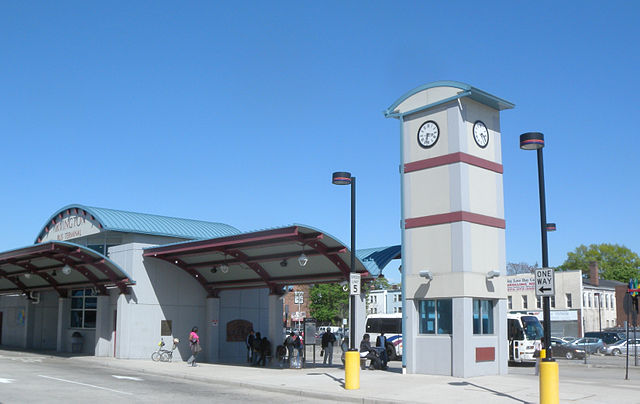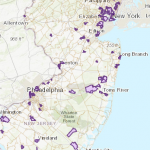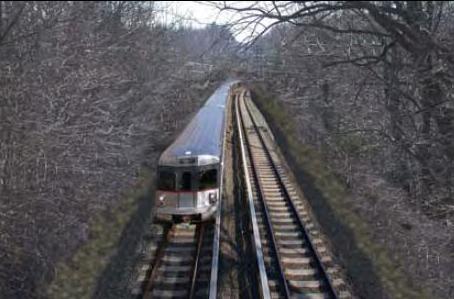New Jersey Future Blog
Tax Relief without Reform?
January 12th, 2007 by Tim Evans
- New Jersey’s local governments shoulder a larger share of public education costs than most other states. Currently, 53.3 percent of revenues for public schools are raised locally in New Jersey, compared to a national average of only 43.9 percent.
- New Jersey is heavily reliant on property taxes to pay for local services, compared to other states. At 46 percent, New Jersey ranks second in the country, after New Hampshire (which has no income tax), in terms of the percent of all state and local taxes accounted for by the property tax. The national average is 31.5 percent.
- The result is the nation’s highest median property tax bill—$5,352, according to 2005 Census Bureau data—and a land use system that encourages municipalities to favor retail and office development while discouraging housing for families, because towns don’t want to have to raise property tax rates in order to pay for new schoolchildren. The so-called ratables chase remains a singular threat to the environment, and the fear of housing for families has helped create a critical housing shortage for New Jersey residents of modest means. Both contribute to making New Jersey less desirable for the workforce and the businesses that hire them.
- Governor Corzine devoted substantial airtime in his State of the State address earlier this week to the issue, insisting that, “Property taxes are the cork in the bottle that constrains New Jersey’s resources and attention.”
Land Use Reform Not Even on the Table
Governor Corzine’s speech touched on a dozen or so of the 98 recommendations that came out of last summer’s special legislative session devoted to finding solutions to New Jersey’s property tax problem. Many of the Legislature’s solutions focus on saving money by making government run more efficiently. A few, like the suggestion that certain small municipalities or school districts should consider sharing services or even consolidating, have positive land use implications in addition to their cost-saving promise. We applaud the Governor and the Legislature for considering cost-sharing and consolidation. But by and large, the negative land use effects created by our current property tax system have been absent from the tax reform discussion.
Consider the proposal to replace the existing system of rebates with a tax credit, to be taken on a household’s income tax bill. This is being billed as “property tax relief.” But is it? The credit is only superficially tied to property taxes because the amount to be received by each household is computed as a certain percent of the property tax bill, depending on household income. The system would be financed by the money currently being used for rebates, plus half of the one-percent increase in the sales tax enacted late last year, and various other unspecified cost-cutting measures. Essentially, each household would still pay the same property tax bill it would have paid otherwise, but is reimbursed for part of it later, via a credit on the income tax return.
This credit would have zero impact on the bad land use practices that are encouraged by the current property tax system. Municipalities and school districts would still be on their own to raise the same amount of money as before; the fact that individual taxpayers are later partially reimbursed by the state is immaterial to local governments, which never see any additional state money. With their total revenues just as dependent as before on the value of property within their borders, local governments would face the same land use incentives that favor developing commercial properties over housing for families with schoolchildren. And since total property tax revenue collected by local governments would be unchanged, New Jersey would remain, as a state, just as dependent as ever on property taxes as compared to income or sales taxes.
A Better Solution?
But there is another way to deliver property tax relief to New Jersey residents while also achieving tax reform: distribute the new sales tax money and the money from the current rebate program directly to local governments for education funding, with the money distributed according to the needs of each school district. School districts could then be required to reduce school taxes by an amount corresponding to the new state aid, resulting in property tax relief for their residents. Taxpayers would still get relief, but New Jersey’s land use system would also get needed reform, because more education funding would come from the state. Such funding would depend more on the actual number of students in the district and less on the number of malls and office parks located there. Because local governments would not be as dependent on local property taxes to fund education, they would likely be less resistant to developments that don’t “pay their own way” fiscally, particularly housing for families.
If we can accomplish property tax relief and reform with the same pot of money, why not do it?
New Jersey Future has developed a Tax Reform Scorecard to help people evaluate the strengths and weaknesses of the property tax proposals currently on the table in Trenton.
For more information about this issue of future facts, contact Tim Evans, research director.
















